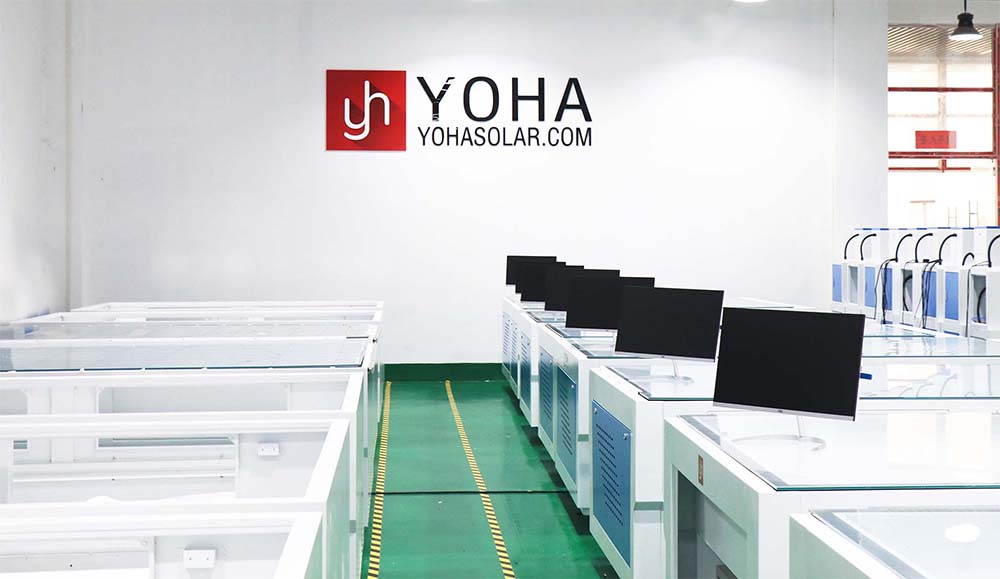Welcome to Wuhan Yoha Solar Technology Co., Ltd!
common problem
Site Map
Language:
 Chinese
Chinese
 English
English
Welcome to Wuhan Yoha Solar Technology Co., Ltd!
common problem
Site Map
Language:
 Chinese
Chinese
 English
English
In the global pursuit of climate action and sustainable development, solar photovoltaic (PV) technology stands as a bright star, radiating clean energy and hope. Its core component – the solar photovoltaic panel (often shortened to PV panel or solar panel) – is increasingly appearing on rooftops, across fields, and even in the vast expanse of space. So, how exactly do these panels work? How does this seemingly simple device transform the abundant sunlight bathing our planet into the electricity that powers our lives? Let's unveil the science behind this remarkable conversion.
The Core Mystery: The Energy Magic of the Photoelectric Effect
The key to understanding solar panel operation lies in the photoelectric effect, a cornerstone of physics. Simply put, when specific materials (primarily semiconductors) are exposed to light, electrons within them absorb energy from photons (light particles). This allows the electrons to break free from their atomic bonds, becoming free electrons, while leaving behind positively charged "holes" in their original positions. This direct conversion of light energy into electrical energy is the fundamental driving force behind photovoltaic power generation.

The Heart of the Panel: The Precise Stage of the Semiconductor PN Junction
A single solar PV panel consists of numerous smaller, fundamental power-generating units – solar cells – connected in series or parallel. The core structure of each solar cell is a meticulously engineered semiconductor PN junction.
Semiconductor Material Base: The most common material is Silicon (Si), chosen for its excellent semiconductor properties. Highly purified silicon forms ingots, which are sliced into thin wafers. Based on crystal structure, the main types are:
Monocrystalline Silicon (Mono-Si): Composed of a single crystal structure with highly ordered atomic arrangement. It offers the highest conversion efficiency (typically 18%-24% or higher) but is relatively more expensive. It appears as a uniform dark blue or black.
Polycrystalline Silicon (Poly-Si): Composed of many small crystals with a relatively disordered atomic arrangement. Efficiency is slightly lower than Mono-Si (typically 15%-18%), but manufacturing costs are lower. Its surface shows a distinctive blue, "frosted glass" or "broken ice" pattern.
Creating the PN Junction: Pure silicon (intrinsic semiconductor) has poor conductivity. Through a process called doping, minute quantities of specific impurity elements are intentionally introduced to alter its electrical properties:
P-type Semiconductor: Doped with trivalent elements like Boron (B), resulting in a majority of "holes" (effectively positive charge carriers).
N-type Semiconductor: Doped with pentavalent elements like Phosphorus (P), resulting in a majority of free electrons.
When a P-type silicon layer and an N-type silicon layer are brought into intimate contact, the critical PN junction is formed at their interface.
Formation of the Built-in Electric Field: Near the PN junction interface, due to the difference in electron and hole concentrations, electrons diffuse from the N-region into the P-region, and holes diffuse from the P-region into the N-region. This diffusion creates:
Positively charged ions in the N-region side (as electrons leave).
Negatively charged ions in the P-region side (as holes leave, effectively gaining electrons).
This creates a built-in electric field (also called the depletion layer or space charge region) directed from the N-region towards the P-region. This field acts like an invisible barrier, preventing further unrestricted diffusion of electrons and holes, establishing a dynamic equilibrium.
Energy Conversion Under Sunlight: Step by Step
Understanding the PN junction and the built-in electric field clarifies the key steps in solar PV panel operation:
Photon Energy Injection: When sunlight (composed of countless photons) strikes the solar cell surface, photons with energy greater than the semiconductor's bandgap (Eg) are absorbed.
Electron-Hole Pair Generation: The absorbed photon energy is transferred to bound electrons within the silicon atoms. If the energy is sufficient, the electron breaks free, becoming a free electron, leaving behind a positively charged hole. This generates a large number of electron-hole pairs within the semiconductor.
Charge Separation by the Built-in Field: The built-in electric field in the PN junction region plays the decisive role. Its direction (N->P) causes:
The newly generated free electrons (negative charge) to be pushed towards the N-type region.
The newly generated holes (positive charge) to be pushed towards the P-type region.
Charge Accumulation: Electrons separated into the N-region accumulate, giving the N-region a net negative charge. Holes separated into the P-region accumulate, giving the P-region a net positive charge. This creates a voltage (electromotive force) between the two ends of the PN junction (i.e., the cell's top and bottom electrodes).
Current Flow in a Closed Circuit: When the solar cell's front electrode (typically connected to the N-region) and rear electrode (connected to the P-region) are connected via wires to an external load (like a light bulb, appliance, or the grid):
Electrons accumulated in the N-region flow through the external circuit towards the positively charged P-region (conventional current direction is defined as the flow of positive charge, so current flows out from the P-region, through the load, and back to the N-region).
As electrons flow through the external load, they perform work, powering the device and utilizing the electrical energy.
Electrons eventually reach the P-region, where they recombine with holes, completing the electrical circuit.
From Cell to Module: Building Practical Power Units
A single solar cell produces limited voltage and power (a standard silicon cell generates about 0.5-0.6V). To achieve the voltage and power needed for practical applications:
Series Connection: Multiple cells (typically 60, 72, or more) are soldered together in series to increase the output voltage.
Parallel Connection: Strings of series-connected cells can be connected in parallel to increase the output current.
Encapsulation and Protection: The interconnected cell matrix is laminated between durable tempered glass (front) and a weather-resistant backsheet, bonded with transparent polymer encapsulant (like EVA), and framed with aluminum. This forms the common solar PV panel (module), protecting it from rain, hail, UV radiation, and other harsh environmental conditions.
System Integration:
Solar PV panels generate Direct Current (DC). Most household appliances and the grid use Alternating Current (AC).
Therefore, a complete solar power system requires a PV inverter to convert DC to AC.
The system also includes mounting structures, cables, combiner/switchgear boxes, monitoring systems, and potentially energy storage batteries (for off-grid or backup power systems).
Efficiency Improvement: The Path of Continuous Innovation
Enhancing the photovoltaic conversion efficiency (the percentage of sunlight converted into electricity) is a constant research goal. Beyond optimizing Mono-Si/Poly-Si technology, other approaches are advancing:
PERC (Passivated Emitter and Rear Cell) Technology: Adds a passivation layer and localized contacts to the cell rear, significantly reducing electron recombination losses and boosting efficiency.
TOPCon (Tunnel Oxide Passivated Contact) / HJT (Heterojunction) Technology: More advanced passivated contact or heterojunction structures with higher theoretical efficiency limits.
Thin-Film Solar Cells: Such as Cadmium Telluride (CdTe) and Copper Indium Gallium Selenide (CIGS). They use less material, perform better in low-light, and suit specific applications.
Perovskite Solar Cells: An emerging technology experiencing rapid efficiency gains and significant cost-reduction potential, currently a major research focus.
Conclusion: Empowered by Sunlight, a Bright Future Ahead
So, how do solar photovoltaic panels work? At their essence, semiconductor material (primarily silicon), under sunlight, generates electron-hole pairs via the photoelectric effect. The meticulously designed PN junction's built-in electric field then drives the directional separation of these charges. This creates a voltage difference, allowing current to flow in an external circuit, directly converting light energy into DC electricity. This process is clean, silent, has no moving parts, and utilizes a nearly infinite and free energy source – sunlight.
Driven by continuous advancements in materials science, manufacturing processes, and system design, solar PV panel efficiency keeps rising while costs keep falling. Their applications are rapidly expanding from large-scale power plants and commercial rooftops to residential homes and even portable devices. A deep understanding of their working principle not only allows us to appreciate the ingenuity of this technology but also underscores its pivotal role in building a sustainable future energy system. Every ray of sunshine is a gift of energy from nature, and photovoltaic technology is the key that allows us to efficiently harness this gift, illuminating a greener future.
keywords:TOP
18086473422
MESSAGE
